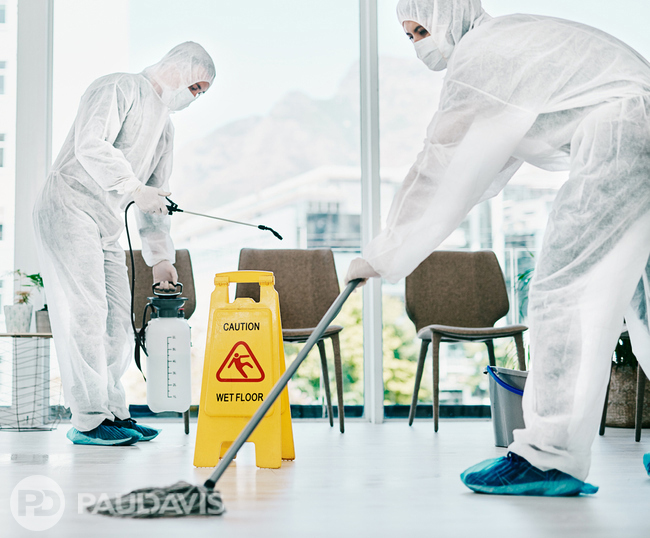
Researchers know dirty little secrets about the haphazard cleaning habits of ordinary citizens. Forty percent of people, for example, can’t remember when they scrubbed the refrigerator. A quarter can’t recollect washing the bed linens. What’s more, they know they’re slouches at upkeep: one in four believes they don’t clean properly and one in three admits they don’t clean often enough.
Yes, many people are confused and conflicted about cleaning. Paul Davis experts, however, are so well-informed on the topic that they teach other cleaning professionals how to do it. The company’s knowledge base, their technician teams, plus training and skill levels are critical weapons in the COVID-19 fight. That’s because normal cleaning – the kind we all do at some point - is worlds apart from treating areas at risk for exposure to this devastating virus.
“There is a huge difference between ordinary cleaning – the activity performed by any person using a variety of off the shelf cleaning products to remove substances from surfaces – and what is required to treat areas that may harbor dangerous pathogens like COVID-19,” says Matt Wildt, Paul Davis Technical Trainer. “The possible presence of COVID-19 requires teams that have extensive training, use proper equipment and protection, employ EPA and FDA approved products, and follow exacting procedures. Professionals are highly qualified to effectively treat these at-risk areas. There are simply too many variables and complicating factors for most people to do an efficient job themselves.”
To illustrate his point, Wildt debunked five common misconceptions about ordinary cleaning methods versus pathogen treatments:
- Myth: deep cleaning is a good way to treat surfaces that may have pathogens. The truth: deep cleaning – scrubbing, strong cleaning products, keen attention to tight or hidden areas – may only remove germs, bacteria, viruses, and other pathogens, but not likely.
- Myth: disinfectants are good cleaners. The truth: many disinfecting products do not remove debris, dirt, and bio-films. Surfaces must be cleaned with detergents and surfactants – which break up, trap and remove dirt by encapsulating it prior to applying a disinfectant.
- Myth: disinfectants can be left on surfaces to provide long-term protection. The truth: these substances more than often will be required to be wiped from surfaces after their dwell time has been met. Furthermore, if they are applied to a food prep surface, they must be rinsed with water afterward.
- Myth: disinfectants treat surfaces as soon as they are applied. The truth: disinfecting solutions must “dwell” undisturbed for specific amounts of time to treat surfaces. If they are removed prematurely, surfaces are not adequately treated. Disinfecting solutions must dwell following the manufacturing specifications.
- Myth: any disinfectant treats pathogens effectively if left on surfaces long enough. The truth: cleaning pros like those at Paul Davis evaluate surfaces, possible contaminants, and product safety to select the most appropriate product. For instance, organic materials can rapidly decrease the effectiveness of disinfectants. This further emphasizes the importance to clean prior to applying the disinfectant.
In sum, cleaning professionals like those at Paul Davis are the best partners for property owners seeking to protect tenants, employees, and customers from virulent pathogens like COVID-19. “This type of cleaning and application of a disinfectant can quickly become complex and overwhelming to those who are not appropriately trained and equipped,” Wildt concludes.
